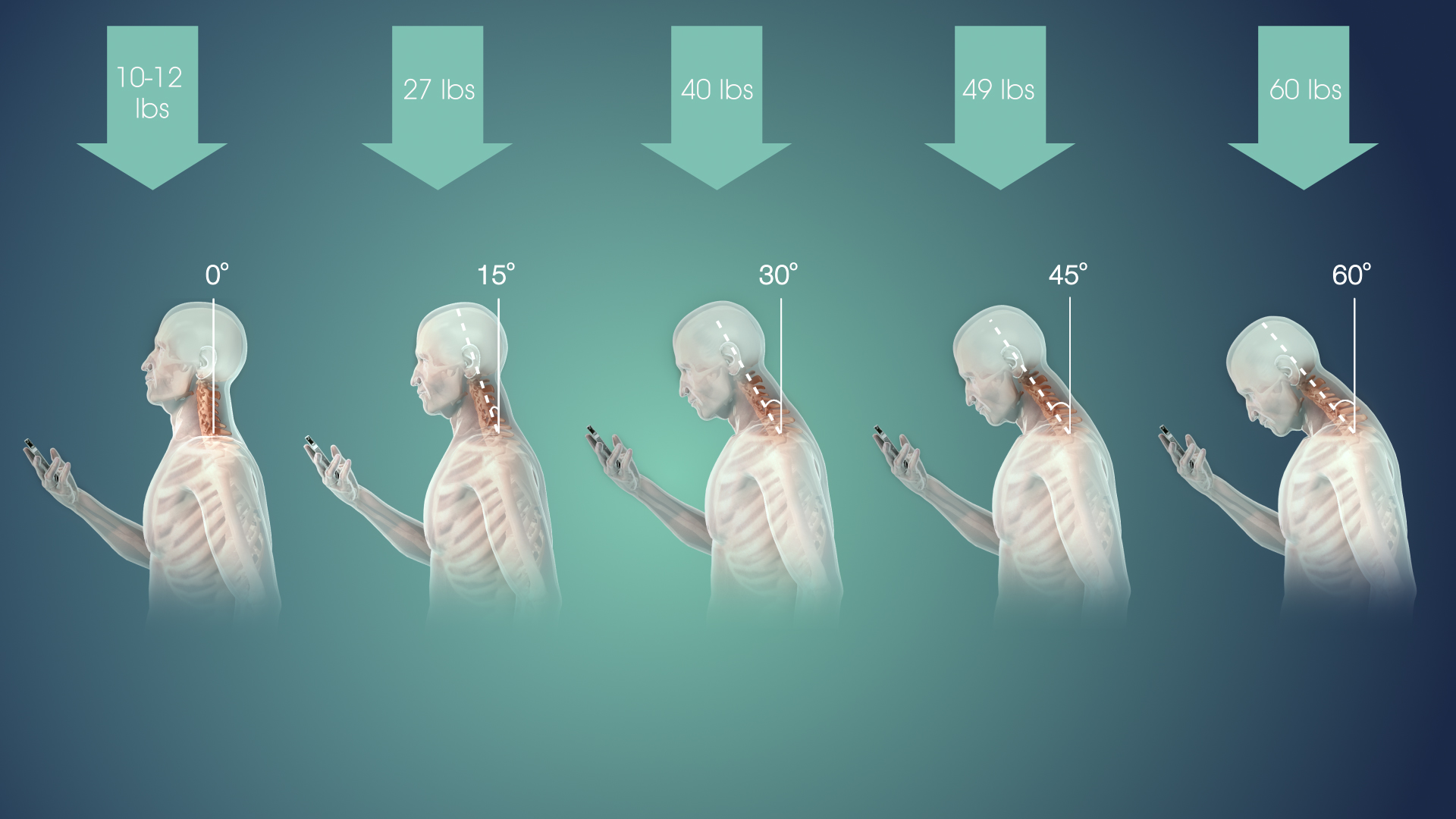The use of handheld devices is often associated with discomfort, pain and repetitive-strain injuries.
As per a 2015 study published in the journal Muscle & Nerve, college students with high smartphone usage are more likely than those with low usage to experience impaired hand function, thumb pain and other issues.
Clearly, minor movements like typing, swiping or tapping, when done repeatedly with force, can stress an array of muscles, nerves and tendons.
Bending your heads and necks at unhealthy angles over cell phones could be more dangerous than you thought.
The ‘burden’ of using your cell phone: Let’s understand ‘Text Neck’
3 things happen when you drop your head:
- Your neck moves forward.
- Your shoulders round forward or lift up toward your ears.
- Your neck and shoulder muscles contract.
Now, did you know: For every inch you drop your head forward, you double the load on your shoulder muscles and cervical spine?

The human head weighs close to a dozen pounds. But as the neck bends forward and downwards, the weight on the cervical spine begins to increase. At a 15-degree angle, this weight is about 27 pounds, at 30 degrees it’s 40 pounds, at 45 degrees it’s 49 pounds, and at 60 degrees it’s 60 pounds.
"‘Text neck’ has become a catch phrase describing neck pain and damage from “looking down at your cell phone, tablet, or other wireless devices too frequently and for too long,"
- chiropractor Steven Shoshany wrote on the peer-reviewed physicians’ website Spine-health.
3 tricks to fix text neck:
- Learn to stand straight in front of the mirror. The correct posture is when you are able to draw a vertical line from your ear to your shoulder.
- Arch your neck and upper back backward, pulling your shoulders into alignment under your ears. This simple stretch can reduce muscle stress. Using two hands and two thumbs is also suggested to create a more symmetrical and comfortable position for the spine.
- While reading from your mobile device or desktop computer screen, raise it up to your eye level, rather than tilting your chin down.
The injuries are not just limited to head and neck region; most texters even complain of painful snapping when bending the thumb and even wear and tear of inside elbow joint. For e.g. Cell phone elbow happens when one talks on the phone a lot–holding the phone up to the ear, the ulnar nerve gets compressed over time, which can lead to problems with motility and sensation. The overuse symptoms usually include tenderness, pain, tingling and loss of sensation. Initial treatment methods may include anti-inflammatories, heat or cold packs, braces, while physical therapy, steroid injections or surgery may be advised if the problem persists.
The trick is to get creative and keep the body guessing. Our bodies were designed to move. Even the most ideal posture while using a cell phone or computer, may make you uncomfortable if you are constantly sedentary. So make it a point to take lots of breaks and get the body moving. While you do this, ensure that look to the distance away from the screens to avoid vision problems, gently stretch wrists and necks, and alter postures, keep shoulders relaxed and elbows close to your body, and your hands, wrists, forearms and thighs parallel.

Depression, Anxiety and Cognitive Impairment: Psychological effects of screen overuse
When you think about how to prevent depression from taking up residence in your life, you probably don’t give your cell phone much thought. After all, it’s how you stay “connected” so that must be a good thing, right? Read More..








